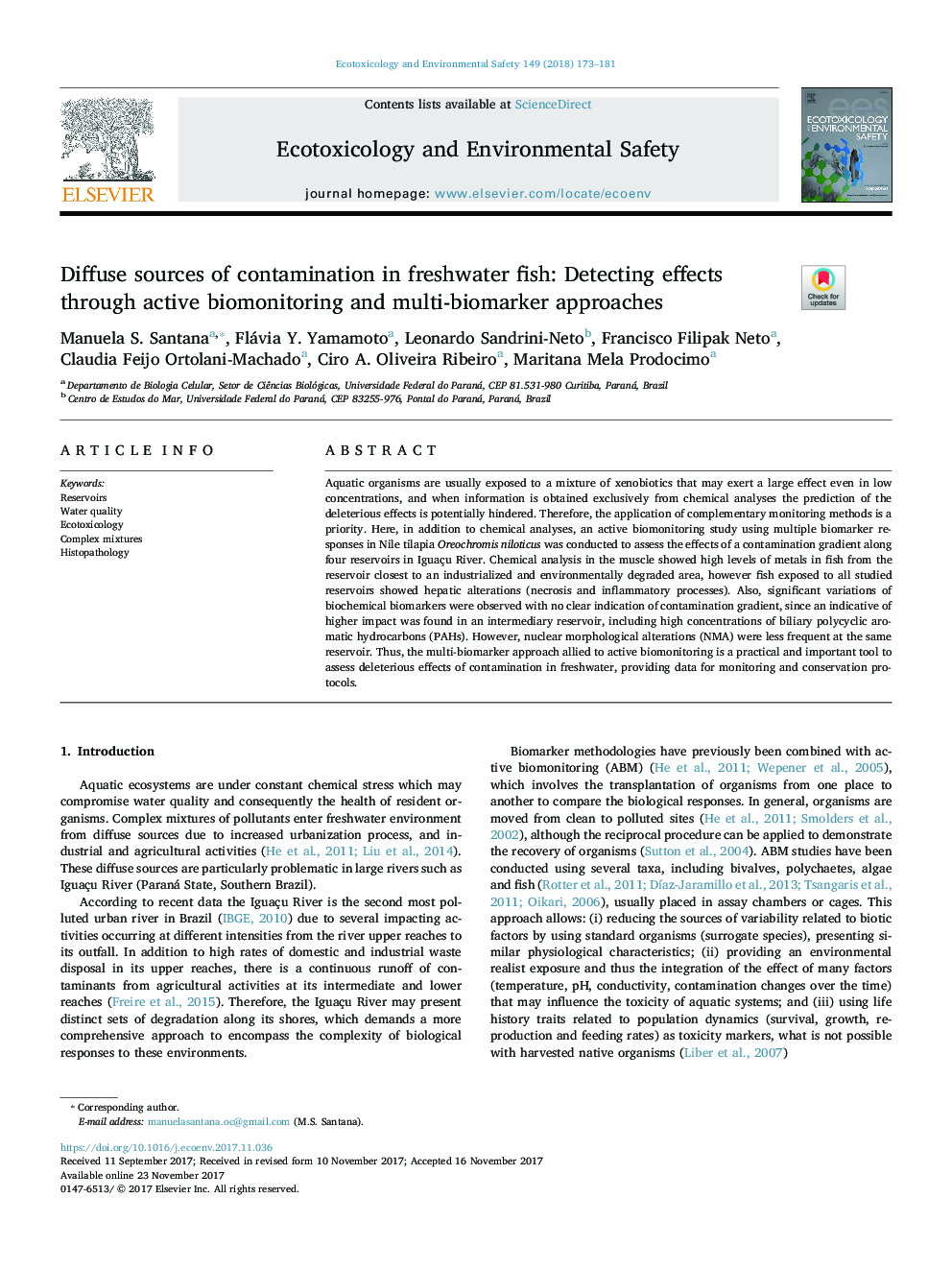| Article ID | Journal | Published Year | Pages | File Type |
|---|---|---|---|---|
| 8854486 | Ecotoxicology and Environmental Safety | 2018 | 9 Pages |
Abstract
Aquatic organisms are usually exposed to a mixture of xenobiotics that may exert a large effect even in low concentrations, and when information is obtained exclusively from chemical analyses the prediction of the deleterious effects is potentially hindered. Therefore, the application of complementary monitoring methods is a priority. Here, in addition to chemical analyses, an active biomonitoring study using multiple biomarker responses in Nile tilapia Oreochromis niloticus was conducted to assess the effects of a contamination gradient along four reservoirs in Iguaçu River. Chemical analysis in the muscle showed high levels of metals in fish from the reservoir closest to an industrialized and environmentally degraded area, however fish exposed to all studied reservoirs showed hepatic alterations (necrosis and inflammatory processes). Also, significant variations of biochemical biomarkers were observed with no clear indication of contamination gradient, since an indicative of higher impact was found in an intermediary reservoir, including high concentrations of biliary polycyclic aromatic hydrocarbons (PAHs). However, nuclear morphological alterations (NMA) were less frequent at the same reservoir. Thus, the multi-biomarker approach allied to active biomonitoring is a practical and important tool to assess deleterious effects of contamination in freshwater, providing data for monitoring and conservation protocols.
Related Topics
Life Sciences
Environmental Science
Environmental Chemistry
Authors
Manuela S. Santana, Flávia Y. Yamamoto, Leonardo Sandrini-Neto, Francisco Filipak Neto, Claudia Feijo Ortolani-Machado, Ciro A. Oliveira Ribeiro, Maritana Mela Prodocimo,
